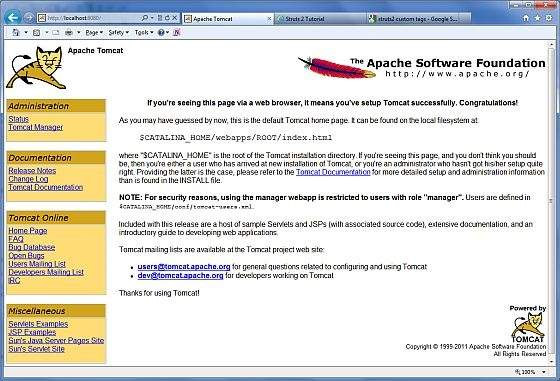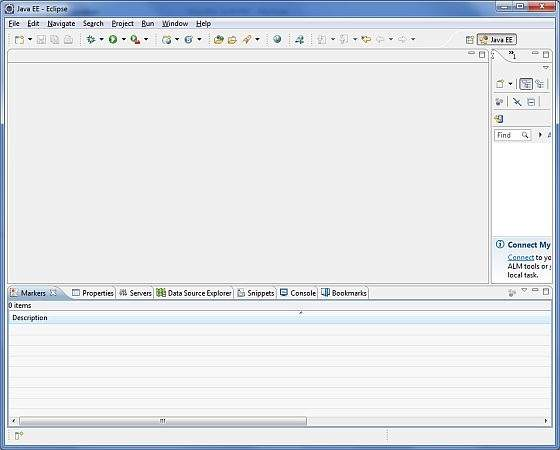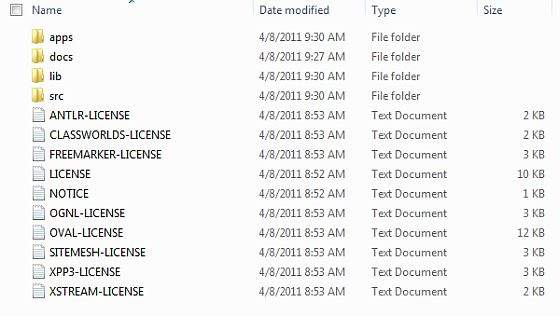Struts2 environment settings
May 15, 2021 Struts2
Table of contents
1. Step 1 - Install the Java Development Kit (JDK):
2. Step 2 - Install Apache Tomcat:
Our first task was to run a minimal Struts2 application. T
his chapter will show you how to build a Struts2 development environment.
Let's say your PC already has JDK (5 plus), Tomcat, and Eclipse installed, and if you don't have these components installed, follow the shortcuts listed below:
Step 1 - Install the Java Development Kit (JDK):
You can download the latest version of SDK: Java SE download link on the Java page of Oracle's website. I n the download file you can see the instructions for installing the JDK and follow the instructions for installing and configuring the settings. Finally, set the path and JAVA_HOME environment variables to the referenced directory that contains Java and Java, typically java_install_dir/bin and java_install_dir.
If you're installing the SDK to C: jdk1.5.0_20 windows system, you'll need to put the following code in your C: .bat C: .
set PATH=C:\jdk1.5.0_20in;%PATH% set JAVA_HOME=C:\jdk1.5.0_20In addition, in Windows NT/2000/XP, you can right-click On My Computer, select Properties → Advanced → Environment Variables, and then update the path value and press the OK button.
In Unix (or Solaris, Linux, etc.), if the SDK is installed on disk C /usr/local/jdk1.5.0_20, you can put the following code into the .cshrc file.
setenv PATH /usr/local/jdk1.5.0_20/bin:$PATH setenv JAVA_HOME /usr/local/jdk1.5.0_20
Also, if you're using an integrated development environment (IDE) like Borland JBuilder, Eclipse, IntelliJ IDEA, or Sun ONE Studio, compile and run a simple program to confirm that the IDE has found the location of the Java you installed, otherwise you'll set it up correctly according to the documentation given by the IDE.
Step 2 - Install Apache Tomcat:
%CATALINA_HOME%in\startup.bat or C:\apache-tomcat-6.0.33in\startup.batIn a Unix (or Solaris, Linux, etc.) environment, Tomcat can be started by executing the following instructions:
$CATALINA_HOME/bin/startup.sh or /usr/local/apache-tomcat-6.0.33/bin/startup.shAfter successful startup, the default web program that contains Tomcat can be accessed http://localhost:8080/ the user. If all goes well, the following results are displayed:

%CATALINA_HOME%in\shutdown or C:\apache-tomcat-5.5.29in\shutdownIn a Unix (or Solaris, Linux, etc.) environment, Tomcat can be stopped by executing the following instructions:
$CATALINA_HOME/bin/shutdown.sh or /usr/local/apache-tomcat-5.5.29/bin/shutdown.sh
Step 3 - Install Eclipse (IDE)
%C:\eclipse\eclipse.exeIn a Unix (or Solaris, Linux, etc.) environment, Eclipse can be started by executing the following instructions:
$/usr/local/eclipse/eclipseIf all goes well after a successful startup, the following results are displayed:

Step 4 - Install the Struts2 vault
- Choose whether you want to install Struts2 on Windows or Unix, and then proceed to the next step to download the compressed files for Windows or Unix.
- Download the latest version of the Struts2 binary at this address: http://struts.apache.org/download.cgi.
- When we wrote this tutorial, we downloaded struts-2.0.14-all.zip, which shows the following directory structure in C: struts-2.2.3 when you unziw the downloaded file:
